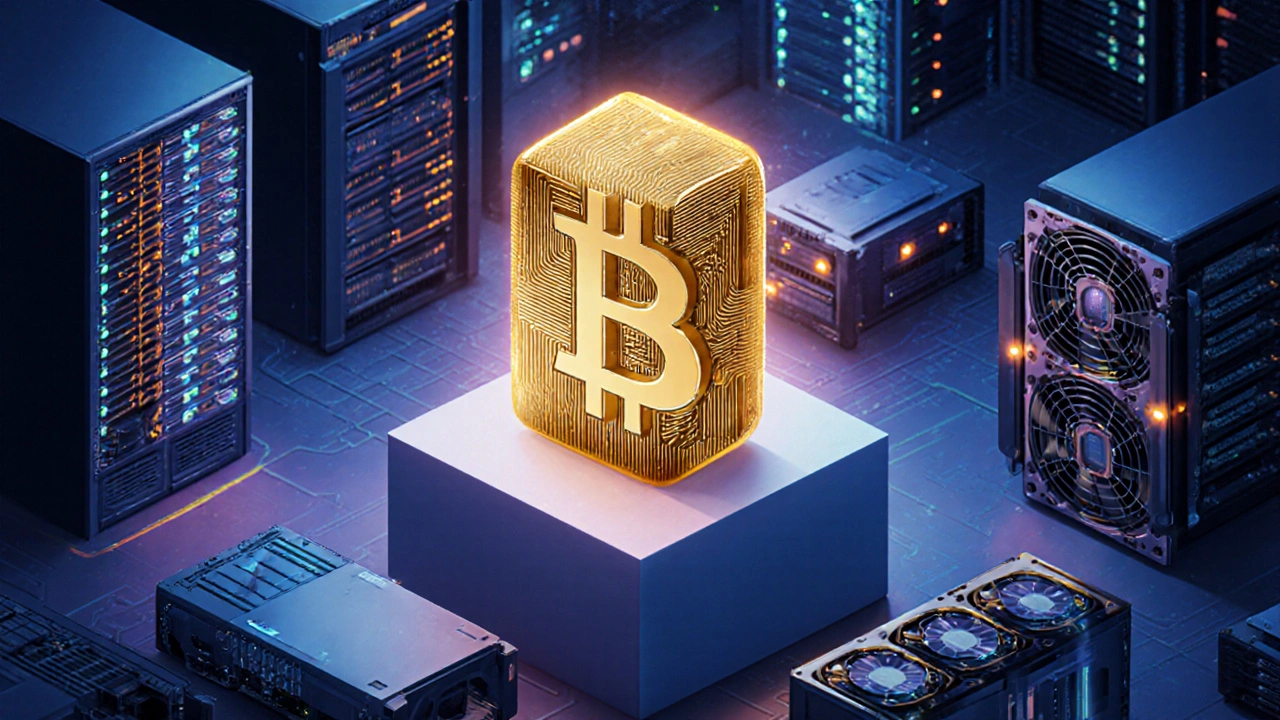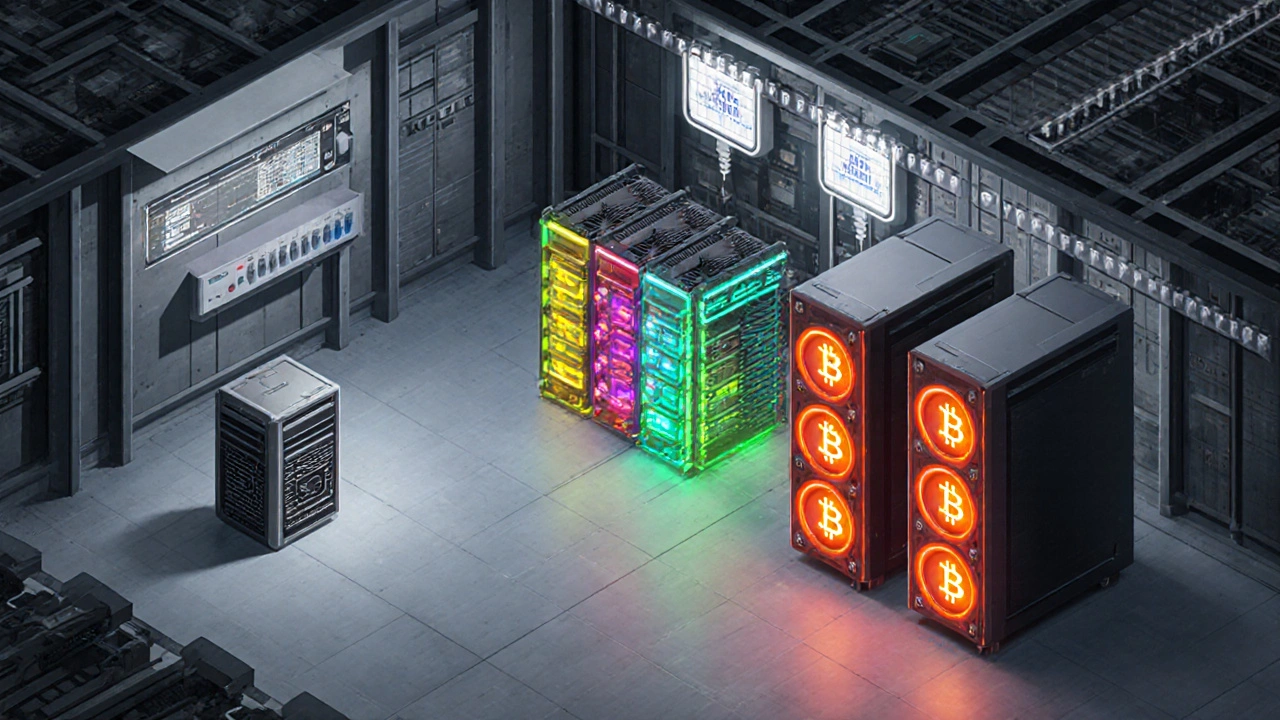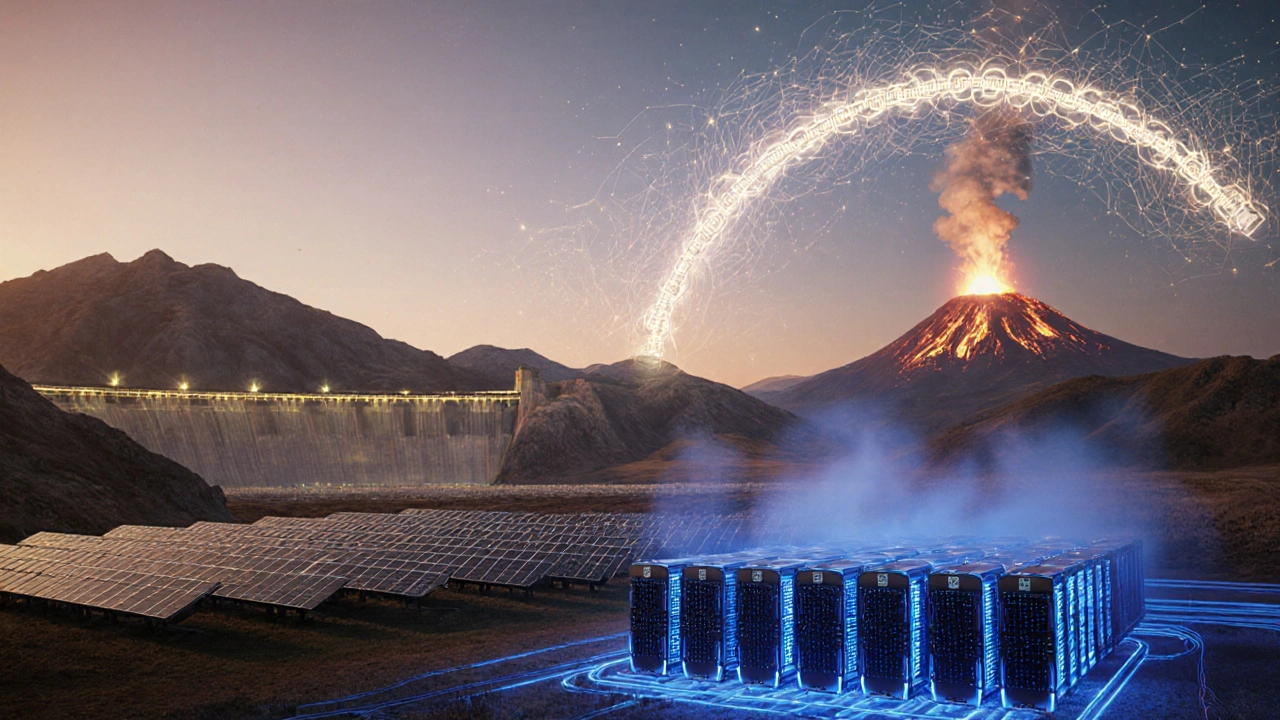How Bitcoin Mining Works: Simple Guide

Key Takeaways
- Bitcoin mining secures the network by solving math puzzles called proof‑of‑work.
- Miners bundle transactions into blocks and compete to add the next block to the blockchain.
- Specialized hardware-ASICs-dominates modern mining, but GPUs and CPUs still have niche uses.
- Energy cost is the biggest ongoing expense; efficiency matters more than raw power.
- Joining a mining pool smooths earnings and reduces variance.
What Is Bitcoin Mining?
When you hear Bitcoin mining is the process of validating transactions and securing the Bitcoin network by solving cryptographic puzzles, think of it as a massive, decentralized lottery. Every five minutes a new “ticket” (a block) is up for grabs. Whoever solves the puzzle first wins freshly minted bitcoins and the right to add the block to the public ledger.
This lottery isn’t random; it’s driven by proof of work (a consensus mechanism that requires miners to perform computational work to prove a block’s validity). The work is measured in hashes - essentially random numbers generated by a hash function.
How the Blockchain Fits In
The blockchain (an immutable, chronological chain of blocks that records all Bitcoin transactions) is the backbone of the system. Each block contains a batch of transactions, a reference to the previous block’s hash, and a special number called a nonce that miners adjust to meet the difficulty target.
Because every block references the one before it, changing any past transaction would require re‑mining all subsequent blocks - an astronomically expensive task. That’s why the blockchain remains tamper‑proof.
Step‑by‑Step: The Mining Process
- Collect pending transactions. Nodes broadcast unconfirmed transactions to the network. Miners pull these into a memory pool (mempool).
- Build a candidate block. The miner selects transactions, usually prioritizing those with the highest fees, and assembles them into a block structure.
- Calculate the block hash. Using the SHA‑256 (a cryptographic hash algorithm that produces a 256‑bit output) function, the miner hashes the block header. The result must be lower than the current difficulty target.
- Iterate the nonce. The miner repeatedly tweaks a 32‑bit nonce and re‑hashes until the hash meets the target. This trial‑and‑error loop is the heart of proof‑of‑work.
- Broadcast the solution. Once a valid hash is found, the miner shares the block with the network. Other nodes verify the proof and add the block to their copy of the blockchain.
- Collect rewards. The winning miner receives the block reward (currently 6.25BTC) plus all transaction fees inside the block.
The whole cycle repeats roughly every ten minutes, regardless of how many miners are trying. If more miners join, the network automatically raises the difficulty; if miners leave, it lowers it.

Mining Hardware: From CPUs to ASICs
Early Bitcoin miners used ordinary CPUs (central processing units that handle general‑purpose computing tasks). They quickly became obsolete as the network’s difficulty surged.
Graphics cards (GPUs (parallel processors originally designed for rendering video games)) offered higher hash rates and dominated mining from 2011 to 2013. Today, the most efficient devices are ASICs (application‑specific integrated circuits built solely for Bitcoin’s SHA‑256 algorithm). An ASIC can produce terahashes per second (TH/s) while consuming far less power than a GPU rig.
| Device | Typical Hash Rate | Power Consumption | Cost (USD) | Efficiency (J/TH) |
|---|---|---|---|---|
| CPU (e.g., Intel i7) | 0.0002TH/s | 65W | ≈300 | ~325kJ/TH |
| GPU (e.g., RTX 3080) | 0.12TH/s | 250W | ≈800 | ~2.1kJ/TH |
| ASIC (e.g., Antminer S19 Pro) | 110TH/s | 3250W | ≈2,500 | ~29J/TH |
Notice the dramatic drop in joules per terahash as you move from CPUs to ASICs. That efficiency is why most serious miners run farms of dozens or hundreds of ASIC units.
Energy Use and Profitability
Electricity is the dominant operating cost. To estimate profitability, miners calculate the break‑even point:
Break‑Even (BTC/day) = (Hash Rate × Block Reward) / Network Difficulty - (Power Cost × Hours per day) / (BTC/USD price)
Because the network difficulty adjusts every 2016 blocks (~two weeks), a sudden influx of new miners can push the break‑even threshold higher overnight. That’s why many farms locate near cheap, renewable power sources.
Real‑world data from a 2024 study showed that the average ASIC farm consumed about 120MWh per month and earned roughly 0.9BTC per day after electricity costs at $0.06/kWh. Those numbers vary widely by location, hardware age, and Bitcoin’s market price.
Mining Pools: Reducing Variance
Solo mining means you either find a block (and get the full reward) or wait indefinitely. Most miners join a mining pool (a collective of miners who combine their hash power and share rewards proportionally) to smooth out earnings.
The pool operator provides a share system: each participant submits a proof of work that meets a lower difficulty target. When the pool finally discovers a full block, the reward is split based on contributed shares.
Popular pools in 2025 include AntPool, F2Pool, and Slush Pool. When choosing a pool, watch the fee structure (typically 1‑2%), payout threshold, and server latency - a slower connection can cost you shares.

Future Outlook: Hard Forks, Layer‑2, and Environmental Pressures
Bitcoin’s core protocol rarely changes, but community debates around energy use have sparked proposals for hard forks (protocol upgrades that are not backward‑compatible, creating a new blockchain) that could alter the mining algorithm.
Meanwhile, Layer‑2 solutions like the Lightning Network shift many small transactions off‑chain, reducing the overall transaction load but not the mining incentive, which remains tied to block rewards and fees.
Environmental concerns are pushing miners toward renewable sources-hydropower in Sichuan, geothermal in Iceland, and even solar farms in Texas. Some large operators have begun offsetting emissions through carbon credits, a trend likely to grow as regulators tighten.
Quick Checklist Before You Start Mining
- Assess electricity costs in your region; aim for ≤$0.08/kWh.
- Choose hardware that balances hash rate and efficiency (ASICs are best for Bitcoin).
- Decide between solo mining and joining a reputable pool.
- Calculate break‑even using current difficulty, BTC price, and hardware specs.
- Plan for cooling and noise mitigation-ASICs run hot and loud.
Frequently Asked Questions
What exactly does a miner do?
A miner gathers pending transactions, bundles them into a block, and repeatedly hashes the block header until the result meets the network’s difficulty target. The first miner to find a valid hash broadcasts the block, earns the block reward, and secures the blockchain against tampering.
Why can’t I mine Bitcoin with a regular laptop?
Modern Bitcoin mining requires massive hash power. A laptop’s CPU can produce only a few hundred hashes per second, which is billions of times slower than an ASIC that delivers hundreds of terahashes. The electricity cost would far exceed any tiny fraction of a block reward you might earn.
How is Bitcoin’s difficulty adjusted?
Every 2016 blocks (about two weeks) the network examines how long the previous period took. If the average block time was under 10 minutes, difficulty increases; if it was over 10 minutes, difficulty decreases. This keeps block production steady despite changes in total hash rate.
What’s the difference between a mining pool and a cloud mining service?
A mining pool groups together independent miners who each run their own hardware, sharing rewards based on contributed work. Cloud mining, on the other hand, sells you a contract for hash power that the provider runs in their facilities. Pools give you more control and transparency; cloud services often have hidden fees and higher risk of fraud.
Is Bitcoin mining profitable in 2025?
Profitability hinges on three variables: hardware efficiency, electricity price, and Bitcoin’s market price. With a modern ASIC and electricity below $0.07/kWh, many farms remain in the black when BTC trades above $30,000. However, sharp price drops or rising energy costs can quickly turn mining unprofitable.